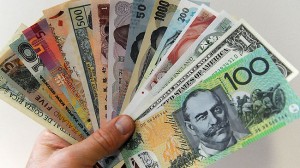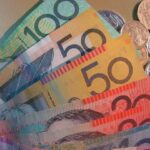 Australian dollar climbed to session highs against its US rival on Monday, following the release of an encouraging string of economic data out of Australia and amid prospects that the Reserve Bank of Australia will not consider a rate cut at its policy meeting tomorrow.
Australian dollar climbed to session highs against its US rival on Monday, following the release of an encouraging string of economic data out of Australia and amid prospects that the Reserve Bank of Australia will not consider a rate cut at its policy meeting tomorrow.
AUD/USD reached a session high at 0.9499 at 6:05 GMT, after having fallen to 0.9422 on November 1st, the pairs lowest point since October 14th. Support was likely to be received at October 10th low, 0.9390, while resistance was to be seen at October 31st high, 0.9526.
The Australian Bureau of Statistics reported that nations retail sales rose at the fastest pace in seven months in September. Sales climbed 0.8% in September compared to a month ago, which exceeded preliminary estimates of a 0.4% monthly gain, after in August retail sales grew 0.4%.
Retail sales, without taking into account the inflation rate, advanced 0.7% in the third quarter of the year compared to the second, while in Q2 the indicator dipped 0.1%.
In addition, the index of house prices in Australia rose 7.6% in Q3 2013 compared to Q3 2012, in line with expectations, after in Q2 house prices climbed 5.4%, a revision up from a 5.1% climb previously.
These data points suggested that the Reserve Bank of Australia (RBA) may abstain from introducing a new cut in its benchmark interest rate at its policy meeting on Tuesday. “From an interest-rate perspective domestically, there’s a growing view that we have hit the bottom,” said Hans Kunnen, a senior economist at St. George Bank Ltd. in Sydney, cited by Bloomberg. “We think the Aussie remains at these levels unless expectations somewhere are totally knocked off the track.”
Traders saw a 96% probability that the RBA will leave borrowing costs at the current record low level of 2.5% tomorrow, according to swaps data by the same media.
Another positive signal for the Aussie came out of China. On Sunday the Chinese National Bureau of Statistics and China Federation of Logistics and Purchasing said that the index, gauging activity in countrys non-manufacturing sector, increased to a reading of 56.3 in October, while in September it stood at 55.4. Values above the key level of 50.0 are usually taken as an indication that activity in the sector has expanded. This news appears to be vital for the Australian currency, as China is Australias largest export market.
Meanwhile, in the United States, the Institute for Supply Management (ISM) is expected to announce that its non-manufacturing index probably fell to a four-month low of 54.0 in October from a reading of 54.4 in September, according to the median estimate of experts participated in a poll by Bloomberg. The institute will release the official report on Tuesday.
The greenback received strong support after the ISM reported on Friday that the index, gauging manufacturing activity in the United States, rose to a reading of 56.4 in October, or the highest point since April 2011, following a reading of 56.2 in September. Experts had anticipated that the index will slow down to 55.1 in October.
Elsewhere, the Aussie was higher against the euro, with EUR/AUD cross losing 0.57% on a daily basis to trade at 1.4212 at 6:49 GMT. AUD/NZD pair was gaining 0.36% to trade at 1.1463 at 6:50 GMT.





